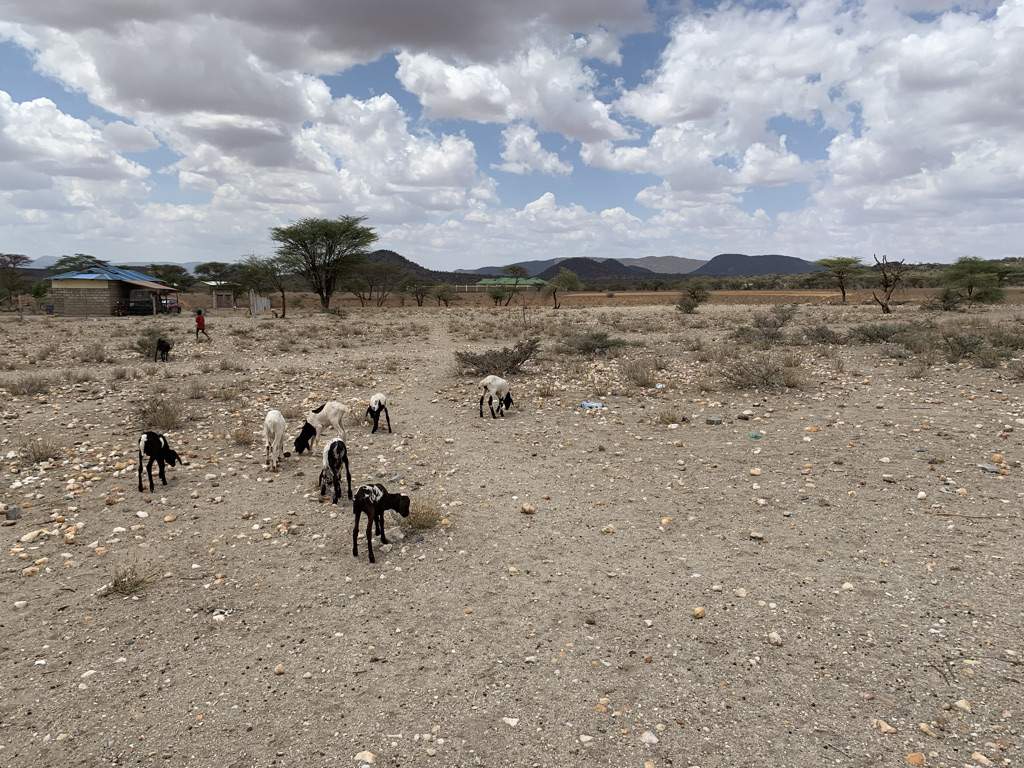What challenges do grassroots environmental peacebuilding movements face in sustaining and scaling their efforts? How can policymakers and practitioners support and help scale grassroots environmental peacebuilding movements? Shared Lands is responding to these pressing questions through research funded by the United States Institute of Peace, ‘Supporting Grassroots Environmental Peacebuilding in Northern Kenya’.
There is a longstanding belief that environmental catastrophes and crises are recipes for conflict – especially between groups who rely on shared natural resources for livelihoods. More recent thinking suggests shared environmental challenges can also inspire new forms of solidarity and collective action rather than simply lead to conflict. Following this line of thought, Shared Lands is studying grassroots environmental peacebuilding movements in northern Kenya to understand how they emerge and the challenges they face.
Much of the research for this study was carried out by Environmental Fellows from northern Kenya embedded in communities across the counties of Marsabit, Isiolo, Laikipia, and Samburu. Throughout 2021, the Fellows carried out regular interviews with people in and around their communities and completed weekly diaries of environmental conflicts, drivers, and peacebuilding efforts in surrounding areas.1 Altogether, 144 interviews and 906 diaries entries were completed.


From 28-29 October 2021, a research reflection workshop was held at the Northern Galaxy Hotel in Isiolo. During the workshop, Environmental Fellows were provided training in qualitative data analysis and carried out initial analysis of the data they collected using a method called Participatory Theme Elicitation. PET is an interactive and engaging approach to data analysis that can be used to include a diverse range of participants, including those with limited prior background or formal training in the analysis of research findings. Following Best et al.’s (2019) five-step method, participants identified themes emerging from the data in small groups before working together to reach a consensus on central themes emerging from the research that reflected all participants’ views.2
Through PET, the Environmental Fellows worked together to identify common drivers of environmental conflict and key actions needed to support grassroots environmental peacebuilding in these areas. Here are just a few examples of what they found.
Wildlife governance and management: Exclusionary and often militarised approaches to protecting wildlife and their habitat leads to conflict between wildlife rangers and security teams and community members being excluded from land and resources. There are also documented cases of abuses against community members by wildlife forces, causing heightened tensions that make future conflict more likely.
Changing rustling dynamics: Intercommunal theft of livestock has a long history in northern Kenya and is often carried out seasonally on a reciprocal basis. In recent years, rustling has become more of an industry rather than social and cultural activity. Now, when livestock is stolen, they may be sold at distant markets and never seen again. This increases the stakes of rustling, leading to more deadly rustling events.
Land and boundaries: Currently in northern Kenya, efforts are underway to register communal land previously held in trust of communities by the government. While important for tenure security, these efforts are bringing to the surface age-old disputes around ancestral land and territorial boundaries. Communal land registration is also leading to new forms of land grabbing, as wealthy individuals and entities seek to acquire land before registration.
Although each of these drivers relates to the environment, they also paint a far more complicated picture when it comes to drivers of conflict. Often the issue of land and resource scarcity is less significant to conflict than governance systems and structures; socio-economic conditions and inequalities; and historic land conflicts and injustices. This is something we will continue to explore and write about throughout the rest of the project.
In the meantime, you can watch this short film, entitled ‘Droughts and Conflicts’ produced by Ramson Karmushu to learn about some of the different factors shaping water conflict.
Relying on their data analysis and other knowledge accumulated during the research, the environmental fellows also identified key areas where policymakers and practitioners can help grassroots environmental peacebuilding movements sustain and scale their efforts. These include: supporting the development and capacity of environmental peacebuilding ambassadors, building bridges between different sectors for environmental peace, and implementing environmental peacebuilding and conflict mediation initiatives.
In the next phase of our project, we will design and deliver evidence-based training for civil society organisations and actors supporting grassroots environmental peacebuilding. Stay tuned for updates and outputs from these activities. If 2021 was all about research, 2022 is all about putting that research into action!
NOTES
1 All research activities followed the COVID-19 protocols of the Government of Kenya and World Health Organisation, primarily occurring outside with social distancing and use of PPE. The research team also made use of the WorldView app, which allowed data to be collected offline, stored in the app, and uploaded to a central database when smartphones were connected to data. This approach meant Environmental Fellows did not have to routinely come and go from their communities, reducing the risk of virus transmission.
2 Best, P., Badham, J., McConnell, T., & Hunter, R. F. (2021). Participatory theme elicitation: open card sorting for user led qualitative data analysis. International Journal of Social Research Methodology, 1-19.
